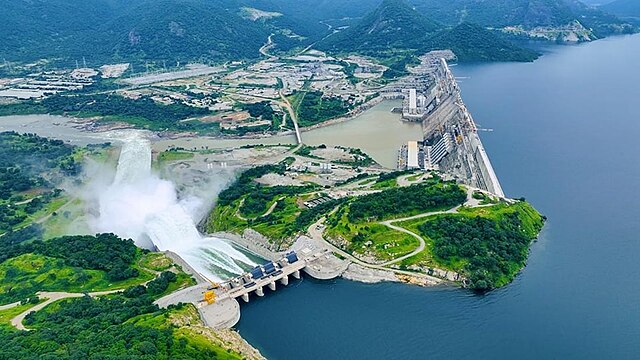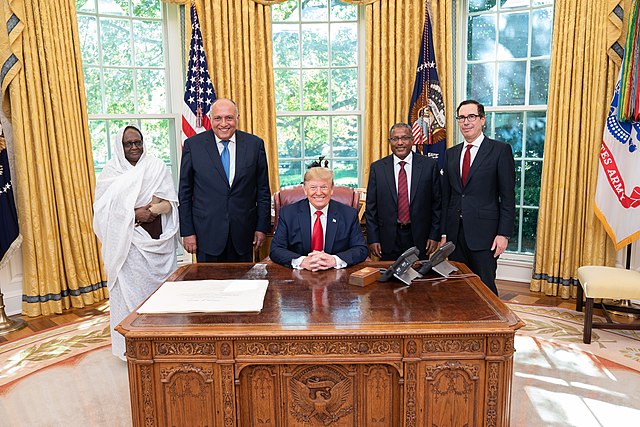
The Grand Ethiopian Renaissance Dam as a test case for 21st-century energy diplomacy

Author: Diplo Team
The Grand Ethiopian Renaissance Dam (GERD), Africa’s largest hydroelectric project, showcases the complex dynamics between energy ambition, regional cooperation, and geopolitical sensitivity. Located on the Blue Nile, the major tributary of the Nile River, GERD is set to provide Ethiopia with over 5,000 MW of renewable electricity. Beyond its technical features, the dam has become the focal point of a diplomatic saga involving Ethiopia as the upstream developer, and Sudan and Egypt downstream, all sharing vital but competing interests along the Nile basin.

The hydrological context
To understand the diplomatic tensions surrounding GERD, it is important to understand the hydrological facts behind the Nile’s flow. The Nile’s two major tributaries, the White Nile and the Blue Nile, converge at Khartoum, Sudan, forming the main Nile that flows northward through Sudan and Egypt toward the Mediterranean. While the White Nile provides a steady but relatively small share of water (about 10%–15%), the Blue Nile contributes approximately 70%–85% of the Nile’s total water flow. The Blue Nile carries the critical seasonal floods from Ethiopia’s highlands, on which downstream countries heavily depend for agriculture and water supply.
This means Ethiopia’s control of the Blue Nile through GERD gives it significant influence over the water reaching Sudan and Egypt. For Egypt, whose 110 million people depend on the Nile for over 90% of their water, the dam poses an existential challenge, fueling deep concerns and diplomatic urgency.
Balancing national ambitions and regional concerns
For Ethiopia, GERD symbolizes a long-awaited opportunity to transform its economy and energy sector through renewable hydropower. The dam, completed in 2024 and slated for inauguration in September 2025, is expected to more than double Ethiopia’s electricity production and supply electricity domestically and to neighboring countries, fostering regional development and cooperation.
Ethiopia views GERD as more than just an energy project; it sees it as a sovereign right to use its own natural resources for national development. This perspective shapes Addis Ababa’s strong position on how the dam should be operated and its reservoir filled, pushing back against what it considers historical control of Nile waters by downstream nations.
Sudan occupies a nuanced position. It benefits from prospects of regulated river flow, flood control, and cheap electricity from GERD, but has expressed concerns over dam safety, emergency protocols, and data transparency. Sudan often attempts to mediate between downstream and upstream interests, recognizing both the potential benefits and risks of the project.
Concrete diplomatic efforts and challenges
Since 2011, the tripartite negotiations among Ethiopia, Egypt, and Sudan have frequently stalled despite numerous rounds mediated by the African Union (AU), the United States, the European Union, and the World Bank.
Ethiopia’s vision of progress
Ethiopia emphasizes its sovereign right to develop the Blue Nile’s resources, viewing the Grand Ethiopian Renaissance Dam as crucial for national progress. Facing hesitancy from international lenders, partly due to Egypt’s diplomatic pressure, Ethiopia adopted an innovative and bold approach by financing the dam primarily through domestic government bonds and public donations. While this placed financial strain on the country, it allowed Ethiopia significant independence and stronger negotiating power by avoiding reliance on external funding that often comes with restrictive conditions.
Egypt’s existential concerns
Cairo has undertaken vigorous international advocacy, urging global recognition of its water security as an existential priority. It has appealed to the UN Security Council and regional bodies, emphasizing the need for a legally binding agreement on dam filling schedules and operations, especially during droughts. Egyptian officials warn that the country reserves the right to defend its water interests by any means necessary if harm occurs. Egypt also pressures international financial institutions to avoid funding projects that threaten its Nile water share.
Sudan’s role
Sudan acts as a balancing force, pushing for technical cooperation and safety mechanisms to mitigate risks. It participates actively in negotiation committees, advocating for data sharing and joint management protocols to protect its interests without escalating tensions.
International mediation
The United States played a notable mediation role during the first Trump administration, hosting negotiation rounds aimed at compromise solutions, generally supporting Egypt’s demand for safeguards. However, Ethiopia rejected proposals seen as favoring Cairo, prolonging diplomatic deadlocks. The African Union continues to lead recent efforts, promoting dialogue as the parties remain entrenched in their positions.

Strategic financing and geopolitical implications
The financing of GERD offers vital lessons in infrastructure diplomacy and national sovereignty. Unlike many large African projects that depend heavily on loans from China or multilateral development banks, the dam’s core construction was largely funded internally through billions raised via government bonds and public contributions. This strategy provided Ethiopia with crucial diplomatic leverage. Limiting dependence on external creditors, it avoided pressure points that could be exploited by downstream nations such as Egypt. For example, infrastructure projects funded by the World Bank generally require environmental and social safeguards that include consultation with affected downstream countries, while Chinese Belt and Road Initiative loans can carry geopolitical conditions linked to other broader strategic interests.
Nevertheless, China remains an important player by financing key transmission lines and supporting infrastructure through loans from the Export-Import Bank of China, while engineering and construction contracts have been awarded to Chinese firms including Sinohydro and Gezhouba. This involvement highlights how the GERD dispute intersects with broader contests among global powers competing for influence in African infrastructure and energy sectors.
Ethiopia’s BRICS membership and diplomatic strategy
In 2024, Ethiopia gained membership in BRICS, the influential bloc of emerging economies including Brazil, Russia, India, China, and South Africa. This membership reflects Ethiopia’s broader diplomatic strategy of diversifying international partnerships and reducing dependence on Western-led institutions, the same strategic thinking that drove its decision to self-finance GERD. BRICS membership provides Ethiopia with alternative multilateral platforms and development partners, offering greater diplomatic flexibility in international negotiations. This diversification of diplomatic options strengthens Ethiopia’s position not only in GERD-related discussions but also in future large-scale infrastructure and development initiatives.
Operational status and phased completion
Since the filling of the reservoir began around 2020, the GERD reservoir has already undergone several filling phases and is largely completed, enabling the dam to generate electricity. While Ethiopia has been producing power from the operational turbines during these phases, the official inauguration of the dam is scheduled for September 2025. As the main dam structure and turbines are already functional, some supporting necessary infrastructure such as transmission lines, environmental mitigation measures, and additional capacity expansion, remain under development or fine-tuning. This phased approach allowed Ethiopia to begin harnessing the energy benefits of GERD while progressively completing technical and supporting elements.
Risks and opportunities for regional cooperation
The GERD situation illustrates the fundamental challenges and complexities of energy diplomacy in practice. The lack of binding agreements and stable mutual trust among Ethiopia, Sudan, and Egypt creates risks of water shortages, economic disruptions, and potential conflict within a geopolitically sensitive region. Egypt’s announcement in mid-2025 that negotiations have stalled and its firm commitment to protect its water rights highlight the seriousness of these risks.
On the other hand, if the three countries can overcome confrontation and move toward cooperative management of the Nile’s resources, GERD holds the potential to foster regional power-sharing, sustainable development, and improved climate resilience. This case exemplifies how contemporary energy diplomacy must effectively combine technical expertise, environmental considerations, and political negotiation to manage shared renewable resources constructively and sustainably.
A test case for energy diplomacy
The Grand Ethiopian Renaissance Dam is one of the most complex examples of 21st-century energy diplomacy, where energy ambitions, shared resources, and sensitive geopolitics converge. Its story reflects how global energy affairs are evolving and moving beyond fossil fuels toward renewable infrastructure, environmental sustainability, and intricate regional cooperation. Since the Blue Nile supplies roughly 70 to 85 percent of the Nile’s water, downstream countries, especially Egypt, view GERD not as a distant project but as a critical issue for their water and national security. The balance between Ethiopia’s right to develop its resources and the survival needs of downstream nations shows how energy projects require technical negotiation, political strategy, and careful environmental management.
Ethiopia’s choice to self-finance GERD demonstrates how infrastructure funding can be a tool for diplomatic independence, enabling countries to pursue development goals without relying on external donors. While financially demanding, this approach has strengthened Ethiopia’s negotiating position compared to traditional donor-dependent models.
Diplomacy and changing international alliances, like Ethiopia joining BRICS, are important for managing risks and encouraging cooperation in the region. The conflict over the GERD will be a key example for understanding how energy diplomacy will work in a world that is connected but still divided.
Click to show page navigation!



